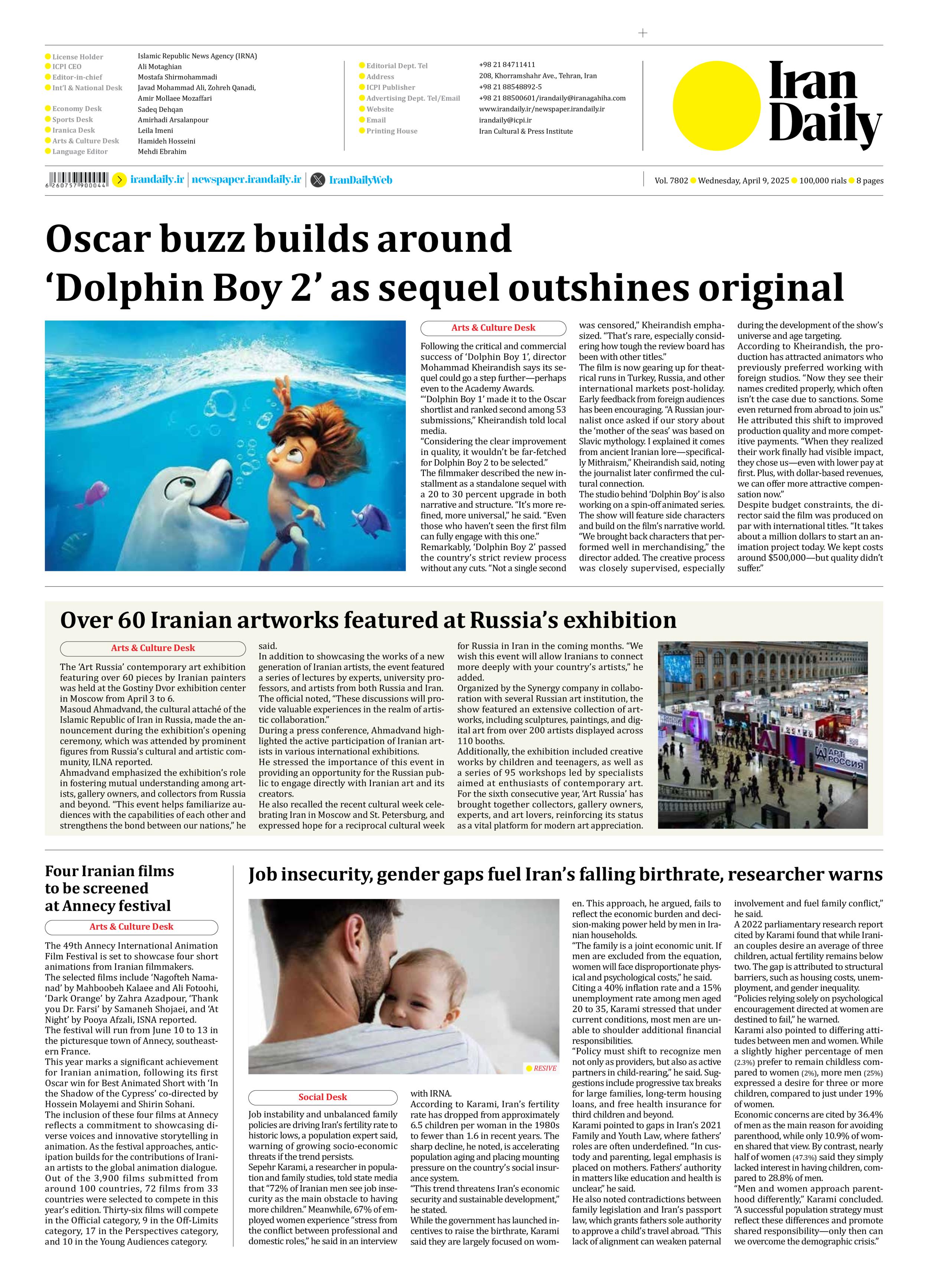
Job insecurity, gender gaps fuel Iran’s falling birthrate, researcher warns
Job instability and unbalanced family policies are driving Iran’s fertility rate to historic lows, a population expert said, warning of growing socio-economic threats if the trend persists.
Sepehr Karami, a researcher in population and family studies, told state media that “72% of Iranian men see job insecurity as the main obstacle to having more children.” Meanwhile, 67% of employed women experience “stress from the conflict between professional and domestic roles,” he said in an interview with IRNA.
According to Karami, Iran’s fertility rate has dropped from approximately 6.5 children per woman in the 1980s to fewer than 1.6 in recent years. The sharp decline, he noted, is accelerating population aging and placing mounting pressure on the country’s social insurance system.
“This trend threatens Iran’s economic security and sustainable development,” he stated.
While the government has launched incentives to raise the birthrate, Karami said they are largely focused on women. This approach, he argued, fails to reflect the economic burden and decision-making power held by men in Iranian households.
“The family is a joint economic unit. If men are excluded from the equation, women will face disproportionate physical and psychological costs,” he said.
Citing a 40% inflation rate and a 15% unemployment rate among men aged 20 to 35, Karami stressed that under current conditions, most men are unable to shoulder additional financial responsibilities.
“Policy must shift to recognize men not only as providers, but also as active partners in child-rearing,” he said. Suggestions include progressive tax breaks for large families, long-term housing loans, and free health insurance for third children and beyond.
Karami pointed to gaps in Iran’s 2021 Family and Youth Law, where fathers’ roles are often underdefined. “In custody and parenting, legal emphasis is placed on mothers. Fathers’ authority in matters like education and health is unclear,” he said.
He also noted contradictions between family legislation and Iran’s passport law, which grants fathers sole authority to approve a child’s travel abroad. “This lack of alignment can weaken paternal involvement and fuel family conflict,” he said.
A 2022 parliamentary research report cited by Karami found that while Iranian couples desire an average of three children, actual fertility remains below two. The gap is attributed to structural barriers, such as housing costs, unemployment, and gender inequality.
“Policies relying solely on psychological encouragement directed at women are destined to fail,” he warned.
Karami also pointed to differing attitudes between men and women. While a slightly higher percentage of men (2.3%) prefer to remain childless compared to women (2%), more men (25%) expressed a desire for three or more children, compared to just under 19% of women.
Economic concerns are cited by 36.4% of men as the main reason for avoiding parenthood, while only 10.9% of women shared that view. By contrast, nearly half of women (47.3%) said they simply lacked interest in having children, compared to 28.8% of men.
“Men and women approach parenthood differently,” Karami concluded. “A successful population strategy must reflect these differences and promote shared responsibility—only then can we overcome the demographic crisis.”







